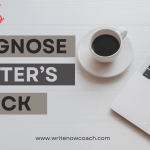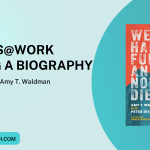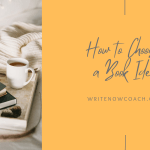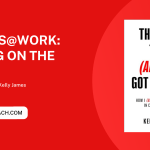The Discovery of Poetry: A Review
Today’s post comes from my writing friend and colleague, Peg Rousar-Thompson. We met several years ago at a National Novel Writing Month workshop. Since then, I’ve had the pleasure of hearing her speak at WriteCamp on the Art of Procrastination. Today she drops by the blog to talk about one of the best poetry primers out there: The Discovery of Poetry.
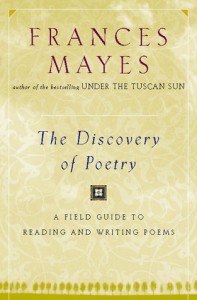 The Discovery of Poetry: A Review
The Discovery of Poetry: A Review
by Peg Rousar-Thompson
I started writing seventeen years ago and it came out as poetry. Well, it came out as what appeared to me to be poetry. I’d read The Raven in middle school, struggled through Shakespeare’s sonnets in English class, and occasionally read the insides of Hallmark cards – so I probably wasn’t a very good yardstick for measuring poetry. For lack of a better description, I labeled it poetry. Which in turn, labeled me poet.
When one of my fellow writer’s group members suggested that we work through Frances Mayes’ book, The Discovery of Poetry: A Field Guide to Reading and Writing Poems, I was busy. I was editing an old novel and thinking about painting my bathroom. The dog needed walking and the car needed an oil change. It all seemed far more important than wading through internal rhyme and stuff that could be sung to the tune of The Yellow Rose of Texas.
Analyzing those thoughts, I realized something important: I didn’t like poetry.
I don’t like Keats and Yeats. I prefer Hitler’s tirades over end rhyme. William Carlos Williams leaves me thinking I’ve missed the joke. Many of the young, free-form poets make me wonder if they don’t have access to spectacular drugs not available at my local pharmacy.
But I love my writer’s group and they really wanted to read this book, so I agreed. It took me two weeks to get through the introduction and I did so by writing my subversive thoughts about poetry in the margins. And whining. I did a lot of whining.
And then, on page xiv, Ms. Mayes gave me a well-deserved punch. She put a copy of Jane Kenyon’s The Sandy Hole. A poem about a father burying his baby. And just as the father in the poem stepped back from the sandy hole, I stood back from this exquisite poem. Maybe, I thought, just maybe there’s something in here for me.
Cautiously, I read on. In the first chapter, Muriel Rukeyser was quoted. And Adrienne Rich, and Frances Phillips’ poem, Salt, that I read over and over. And just when I was about to wave the white flag and admit that I adored poetry, Ms. Mayes would lob John Donne, e.e. cummings, or Wordworth at me. I found the best way to fight back was to continue my attack on the margins surrounding these disagreeable poems.
Of course, the book is not just the poetry of others. Each chapter begins with an explanation from Frances (by the third chapter, we were on a first-name basis), covering imagery, metaphor, meter, and finally–form. I dragged my feet on that chapter and convinced my group to take a full three weeks to attempt some of the traditional structures and also to create our own. This is what I needed to learn! I can differentiate my haikus from my sestinas!
Okay, so I’m not a complete convert. Yes, I find Billy Collins strangely amusing, but still think Yeats and Keats are quite dull. And Williams’s The Red Wheelbarrow remains the dumbest poem I’ve ever read. And Shakespeare does tend to go on a bit, but I have new friends–Gwendolyn Brooks and Jamaica Kincaid, both who know what it’s like to be a girl in our world, C.D. Wright and Muriel Rukeyser who weave story into their verse. James Dickey and I share an affinity for sheep.
Even though my group finished this book two weeks ago, I find that it’s still here on my desk. I’ve opened it several times this week in celebration of National Poetry Month, with much gratitude to Frances Mayes. Because of her, I can honestly say: I love some poetry.
It’s a start.
About the Author: Peg Rousar-Thompson is a freelance writer from Racine and an editor for Southport Press. She serves as the municipal liaison for National Novel Writing Month (NaNoWriMo) for the southeastern Wisconsin region, has published poetry, fiction and personal essays. Her poetry has been performed by The Artist Next Door’s projects, Nosferatu and Graffiti. Peg has had one play produced and is currently working on another. For puppets. Seriously.
You can visit Rock, Paper, Scissors’ brand new blog, complete with prompts for National Poetry Month, here: http://rockpaperscissorswriters.wordpress.com/ And it would be awesome if you’d friend them on Facebook: https://www.facebook.com/pages/Rock-Paper-Scissors-Writers-Collective/210080925683666



